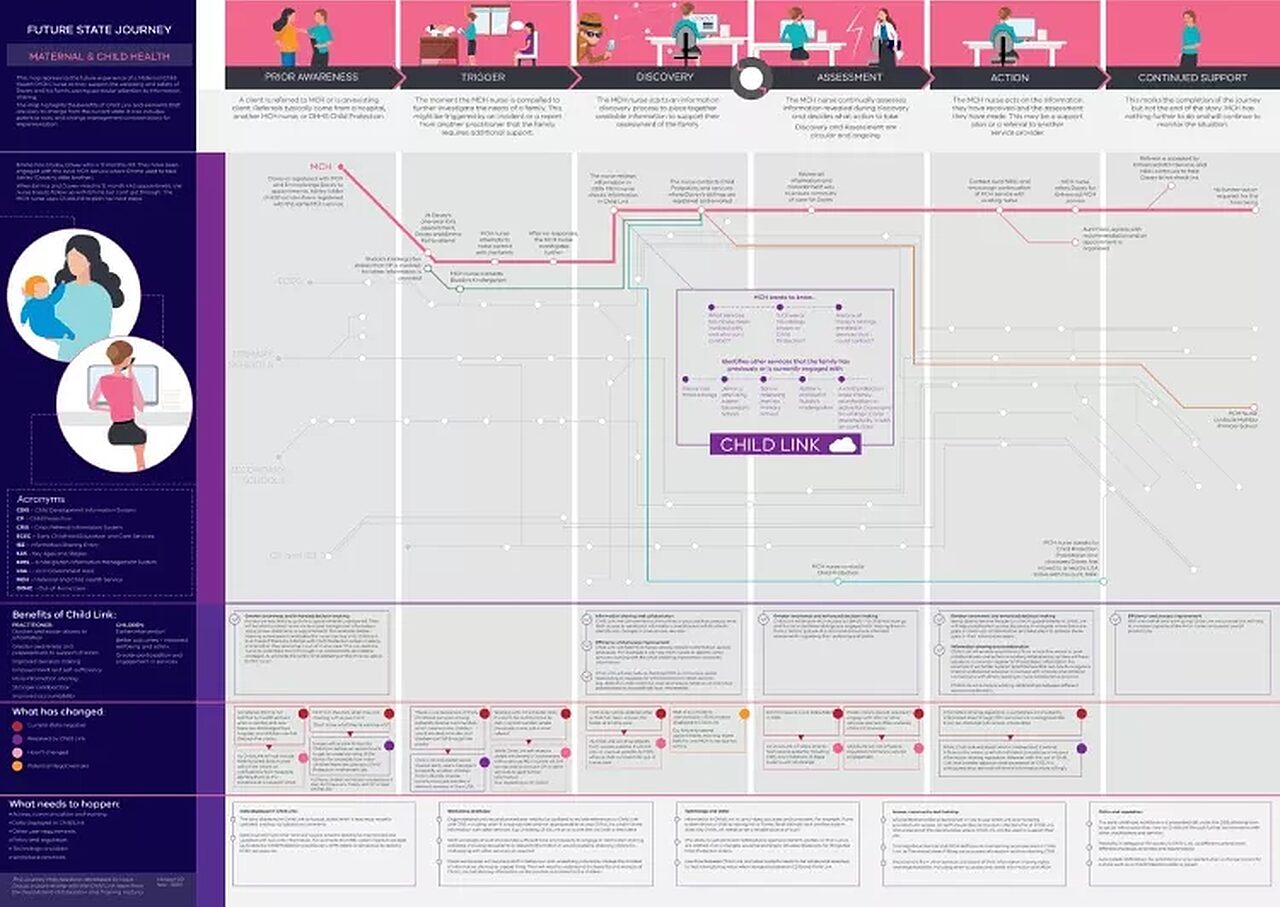The Department of Education and Training (DET), one of several Victorian Government agencies that work with children and their families, is leading the rollout of Victoria’s child information sharing reforms.
Child Link seeks to improve collaboration
Victoria’s child information sharing reforms are designed to support professionals throughout the service system to deliver better outcomes for children and their families.
Successive inquiries, including a Royal Commission, had found practitioners sharing information was essential to keeping people safe. But making this a reality would involve overcoming significant challenges, including helping practitioners understand their obligations, translating those obligations into practice, building relationships between people who work with children and families and shifting behaviours of people who have worked in their fields for many years. Even with people doing their best and with the best intentions, sharing information was challenging.
The solution was Child Link, a web-based register that enables quick and effective collaboration among practitioners and is a starting point for sharing information.
DET was responsible for designing and implementing Child Link. To support rollout and change management, DET engaged Nous to lead the design research with end-users to understand their current experience of information-sharing and cross-agency collaboration and to re-imagine the future with Child Link.
Human-centred design led to engaging materials
Our approach was driven by human-centred design. After researching current circumstances, we set to work engaging with a wide range of end users, including 72 practitioners from agencies and service providers, through 19 co-design workshops and eight validations sessions.
Designing with a range of practitioners involved extra complexity during COVID-19. Our preferred in-person workshops with participants were made impossible by lockdown, but driven by the engagement philosophy “Getting it right, not being right”, we remained flexible in our approach and adjusted to ensure everyone involved could participate fully.
Inspired by these insights, we developed design artefacts that were validated directly with participants:
- Five current state journey maps, which incorporated 15 individual stories
- Five future state journey maps, which offered a system view of a network of services and agencies
- Five current state network diagrams, which represented information flows between practitioners and agencies
- Five future state network diagrams, which represented information flows and service referrals between practitioners and agencies in the future (example below)
- A comprehensive insights report, which details unique and shared challenges and opportunities for improvement across the system.


Insights are guiding design of the new system
Nous’ work has guided the design of Child Link, influencing strategic policy, system usability, functionality and data requirements. The insights are also supporting implementation planning, including messaging and communications, change management and training requirements.
The products are valuable to a broad audience and will endure into the future. They were shared with stakeholders from across the system, right up to ministers and departmental secretaries. Frontline practitioners and agencies beyond the scope of the work said they valued the artefacts and wished to use them for training and onboarding staff.
Our work won a 2021 Good Design Award in the category of Public Sector Service Design. It was also a finalist in the 2021 Victorian Premier’s Design Awards.


What you can learn from this project
Information-sharing systems require a people-first rather than technology-first approach, so it is essential to understand the context, environment and relationships that drive behaviour.
Designing with the people impacted by the new system rather than for them moves stakeholders toward a shared understanding, greater engagement and endorsement of reforms.
Engagement strategies need to be personalised to each user group, with individual goals and a bespoke onboarding experience for each participant.


